Seahawks hope to unlock ‘point guard’ version of Sam Darnold

When the Seattle Seahawks decided to trade Geno Smith, they immediately targeted Sam Darnold not only because of the breakout season he had with the Minnesota Vikings, but also because they believe he can be even better in Seattle.
“Sam’s best days are ahead of him,” coach Mike Macdonald said during Darnold’s March 13 introductory news conference.
Darnold’s lone season with the Vikings in 2024 was the best of his seven-year career and one of the top outings by anyone at his position. Darnold was a top-10 quarterback by touchdown percentage, passing yards and yards per attempt on his way to becoming a first-time Pro Bowler.
The third pick by the Jets in 2018, Darnold is joining his fifth team in six years. He signed a $10 million deal weeks before Minnesota selected J.J. McCarthy with the 10th pick in the 2024 draft and became the unquestioned QB1 in camp when McCarthy suffered a torn meniscus. Minnesota’s infrastructure – a combination of play caller, offensive line, skill talent and defense – provided the opportunity for Darnold to be the best version of himself, something he’d been building toward since the 2023 season when backing up 49ers quarterback Brock Purdy.
In Seattle, Darnold won’t have the same supporting cast he had in Minnesota. But the Seahawks are betting the strategy change he adopted the last few years in San Francisco and Minnesota will carry over to Seattle.
Darnold attributed some of his early pro struggles to bad habits he developed in high school and college, when escaping trouble meant bailing from the pocket and successfully exploiting the fact he was among the best athletes on the field. The NFL was a much-needed reality check.
“I felt like I could do that at ease,” said Darnold, who in three seasons as the New York Jets’ starter ranked 37th out of 38 qualifying quarterbacks in dropback EPA with the third-highest interception rate. “You get to this level and it’s not that easy.”
In discussions with Purdy, Darnold said the 49ers quarterback referred to himself as a point guard whose job was to “get the ball in their hands and let them go do great things with the rock.” Purdy made the Pro Bowl that season, finished fourth in MVP voting and quarterbacked the 49ers to the Super Bowl. Darnold took Purdy’s message to heart and adjusted his approach accordingly (the point guard analogy is one former Seahawks coach Pete Carroll often used to describe the quarterback’s role).
“When I started to change my thought process as a quarterback to just getting the ball in my guys’ hands, that’s kind of where it unlocked for me,” Darnold said.
Seattle might add more skill talent in the draft, but for now, Darnold’s top four playmakers are receivers Jaxon Smith-Njigba, Cooper Kupp and Marquez Valdes-Scantling, and tight end Noah Fant. In terms of weaponry, that’s closer to what Derek Carr had in New Orleans last season than what Darnold had in Minnesota but there’s nonetheless a blueprint for getting the best out of the quarterback, assuming a credible run game and adequate pass protection (two things that have been missing in Seattle).
When Klint Kubiak was the Vikings’ offensive coordinator in 2021, Kirk Cousins ranked second in under-center play-action rate. Last season in New Orleans, Carr ranked fourth in the same category with Kubiak calling the plays (Darnold was third). Kubiak’s scheme is built upon the idea of marrying the run game and passing attack, and a heavy dose of play-action is one way to achieve that goal. When specifically executing play-action fakes from under center, Darnold was among the best passers in the league last season, ranking top 10 in dropback EPA and touchdown rate.
“Definitely stands out on tape,” Kubiak said of Darnold as a play-action passer. “Seeing Sam turn his back to the defense and find deep crossers and hit guys in stride is definitely a strength of his game – one of many strengths (in addition) to throwing on the run.”
The Seahawks can’t just live off play-action dropbacks, which is why in response to a question about Darnold’s play-action passing, Kubiak brought up the real tests of elite quarterback play.
“To be an elite quarterback, you’ve got to be at your best on third down and in the red zone, and that’s two (areas) where Sam really makes his strides,” Kubiak said. “That’s the part we’re most excited about.”
Darnold had good third-down numbers last season. The key for Seattle this season will be making sure the supporting cast uplifts Darnold the same way it did in Minnesota. Darnold can make something out of nothing because of his arm and athleticism.
The most important piece of this puzzle is the offensive line. Darnold was great most of the year, then faced pressure at his two highest rates of the season in a 31-9 Week 18 loss to the Lions and a 27-9 loss to the Rams in the playoffs. As the playoff loss illustrated, when poorly protected, Darnold can look worse than either of Seattle’s last two quarterbacks. There’s a reason Minnesota spent big this offseason to upgrade its interior offensive line.
The same can’t be said of Seattle, which still needs to acquire a veteran free-agent lineman, hit a home run with at least one of its 10 draft picks and get better coaching from its new offensive staff. That’s a lot to ask in one offseason, but the only way Darnold can effectively play point guard in Seattle is if all those boxes are checked.